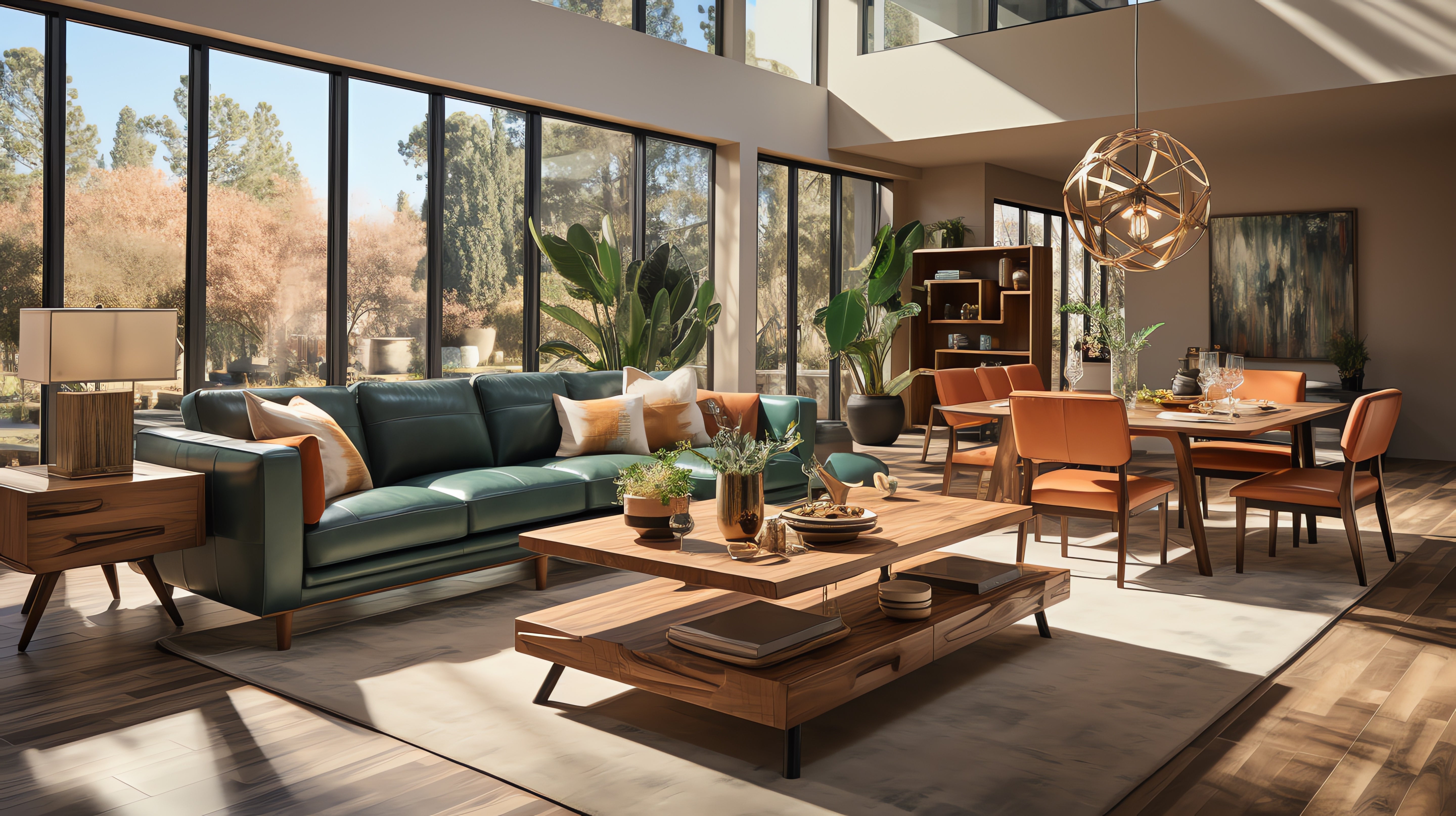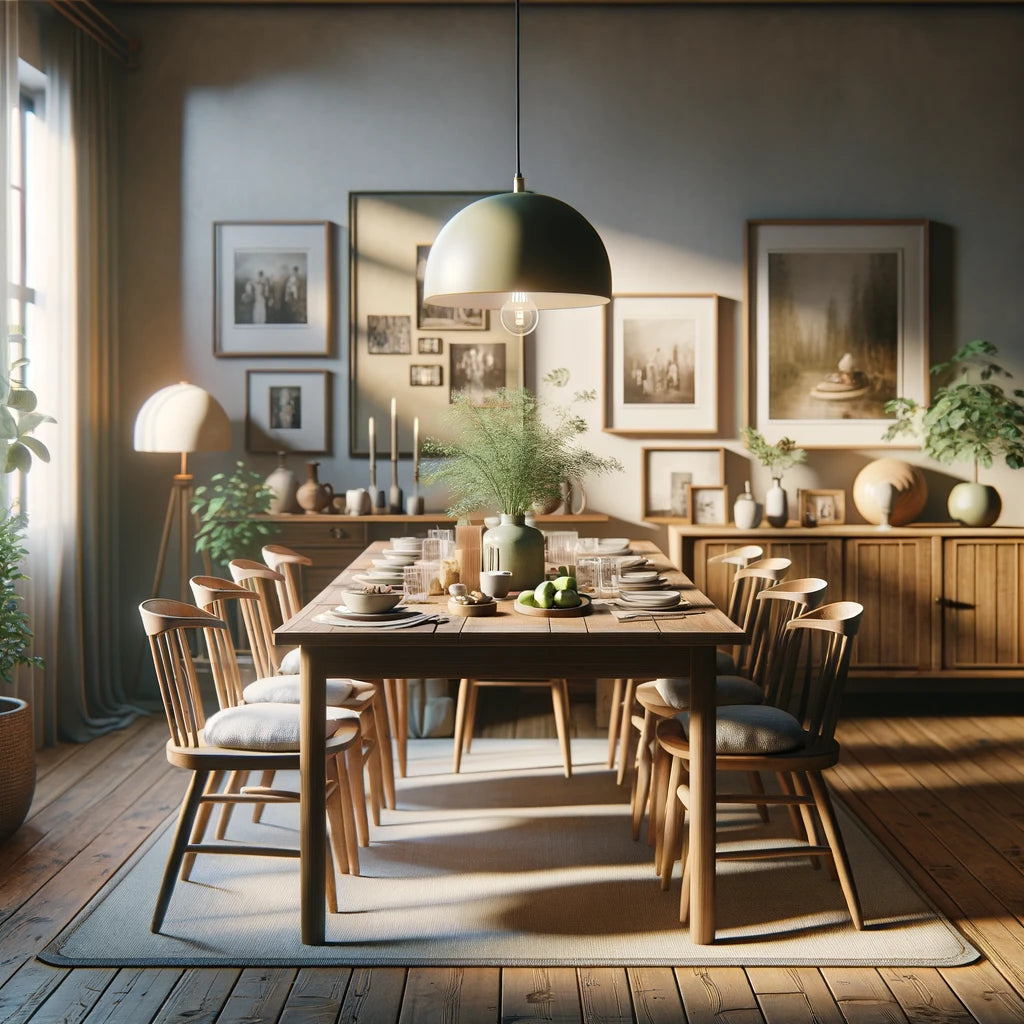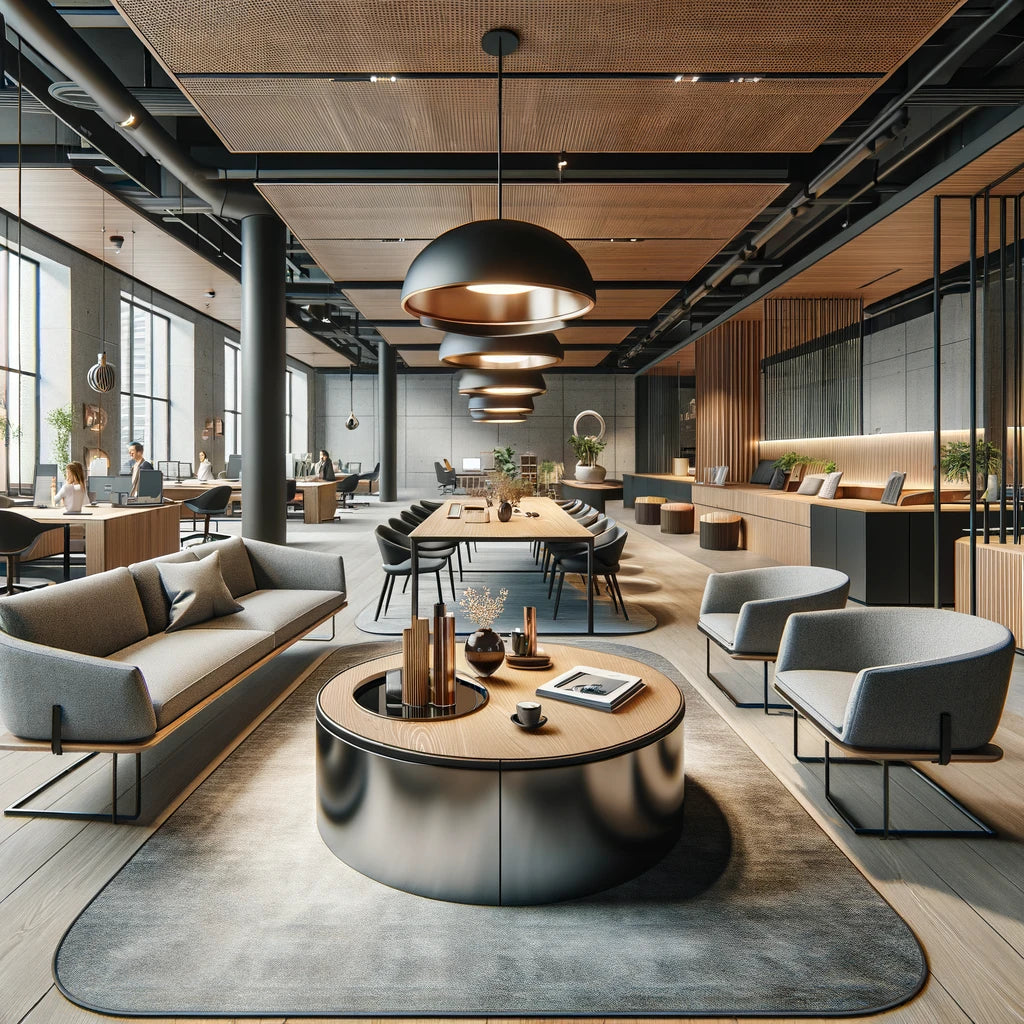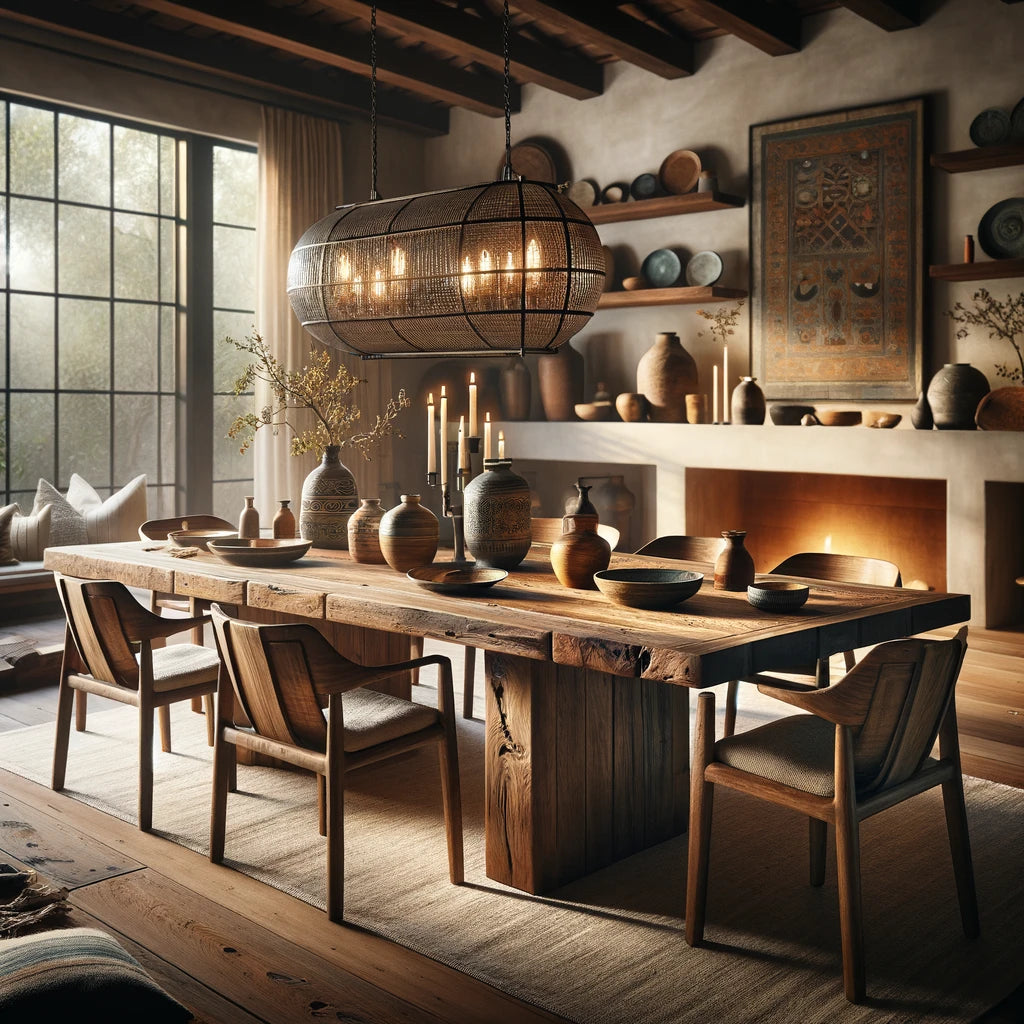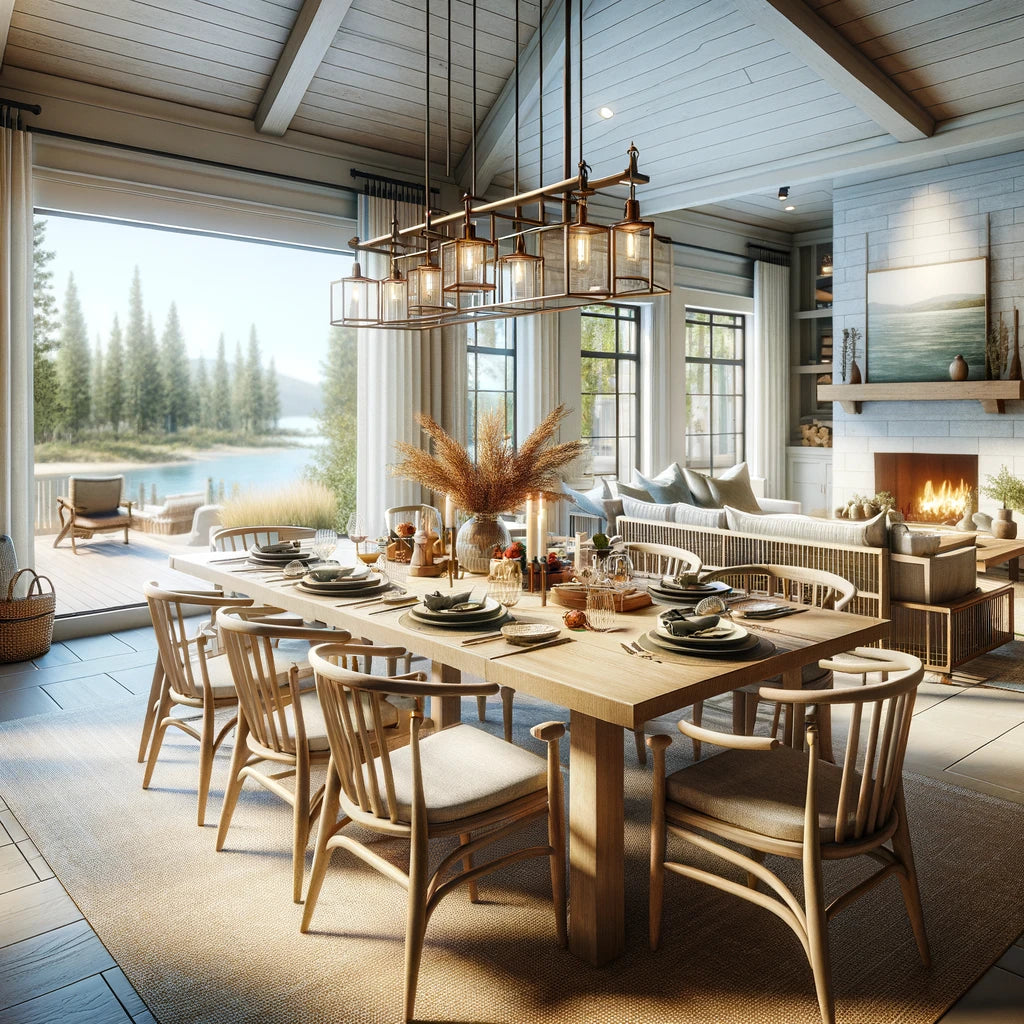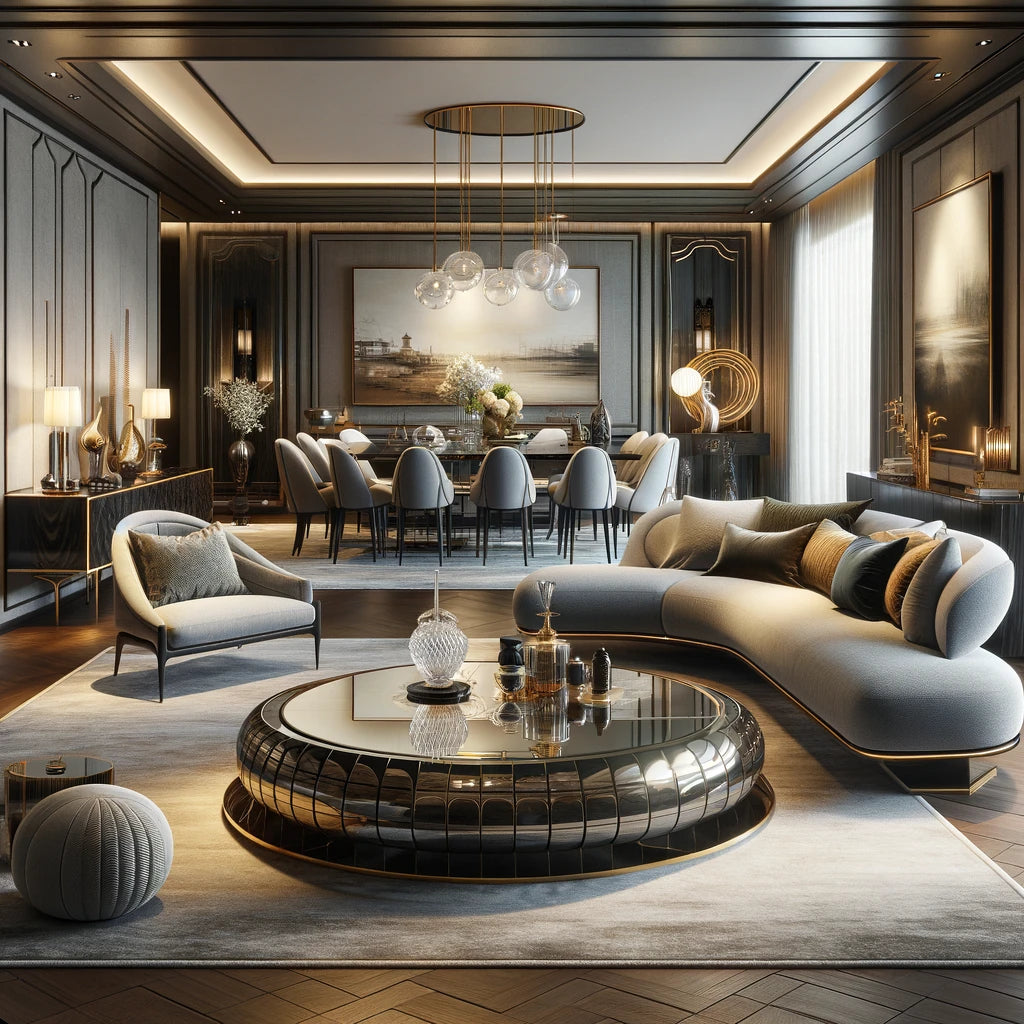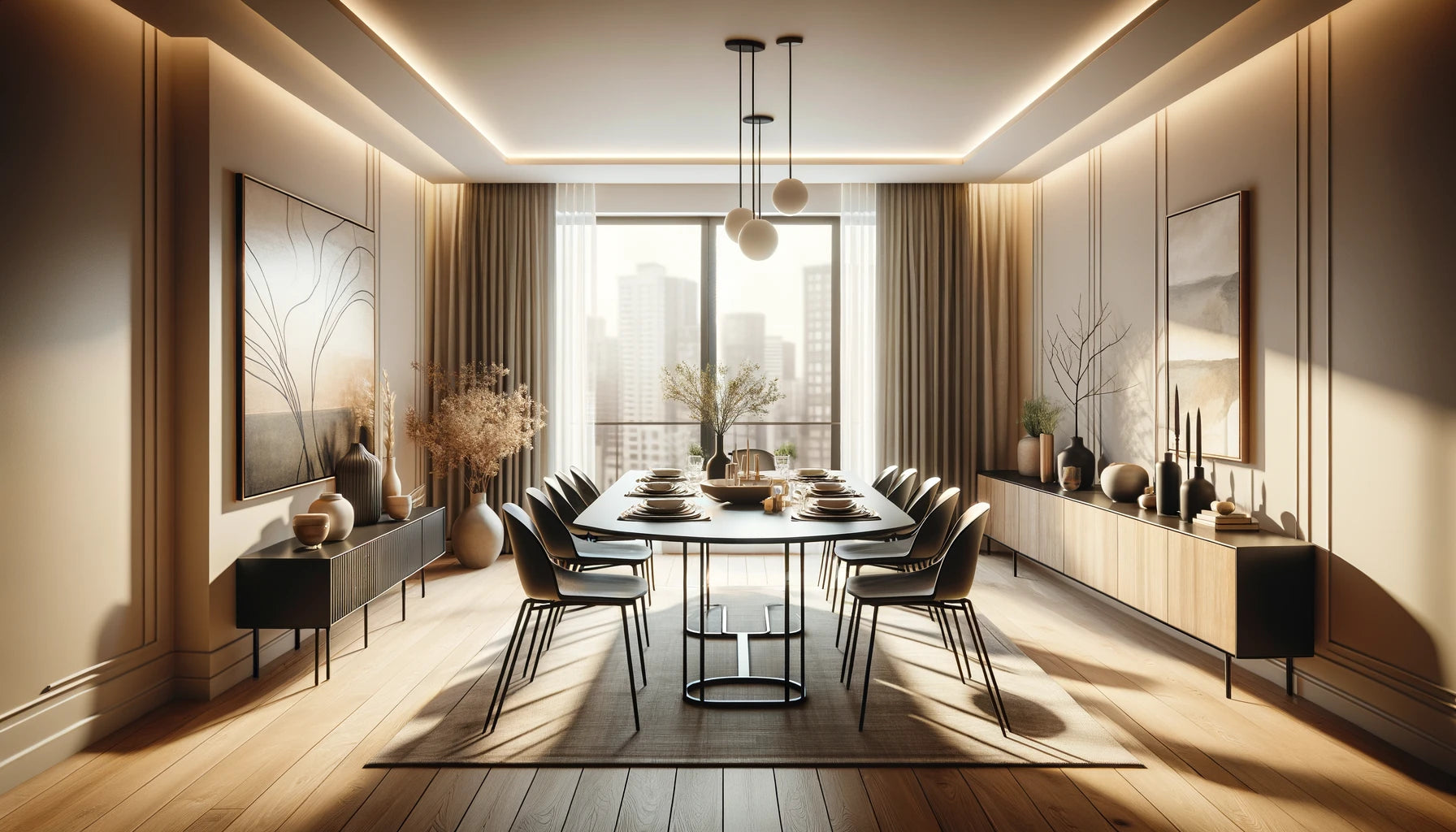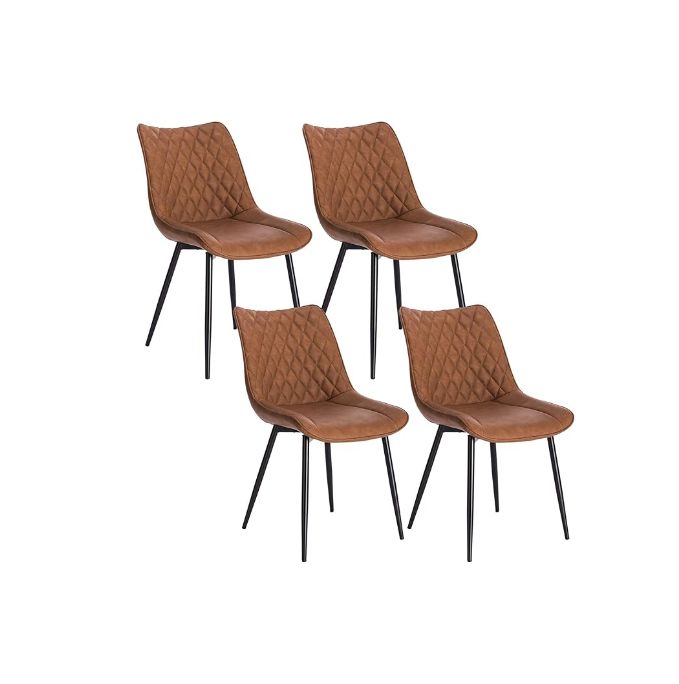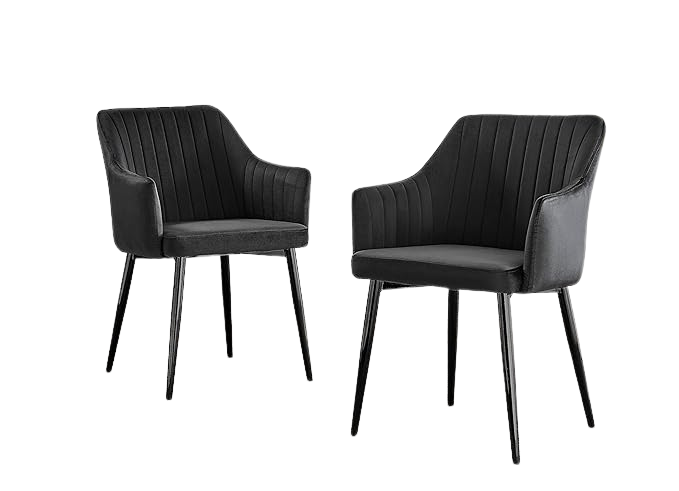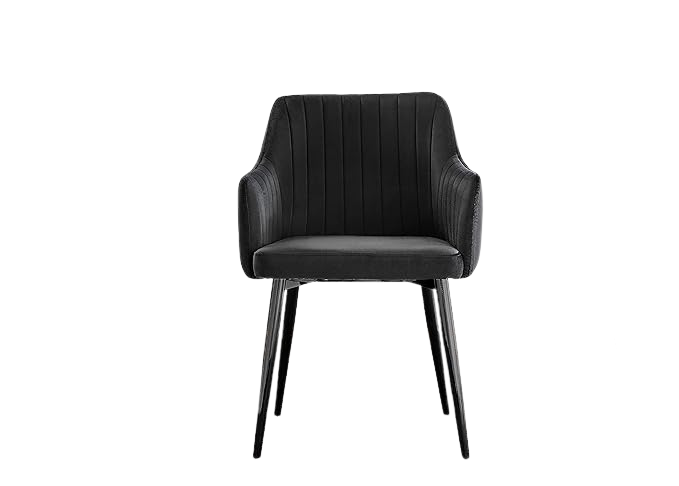In the rhythm of contemporary living, where every moment pulses with activity, the home has become a sanctuary of calm. The minimalist movement in home decor, with its clarion call of 'less is more,' invites tranquillity into bustling lives. This design philosophy doesn't just strip away the excess—it celebrates the purity of space, the elegance of simplicity, and the serene beauty of functionality.
Minimalism is more than a design aesthetic; it's a deliberate choice, a lifestyle that values the quality of items over quantity. The minimalist home is a thoughtful curation of pieces that speak of necessity and delight in equal measure. It's a space where each item is intentional, where furniture doesn't just occupy a room but complements and enhances it.
Simplicity is not about having less, but being less encumbered by the things that don't matter. #plism #minimalism pic.twitter.com/CQxEu0u6px
— QRC (@QamarRiaz1) November 6, 2023
The Essence of Minimalist Furniture
Minimalist furniture is the cornerstone of a design ethos that favours intentionality.
It's about selecting pieces that have a deliberate function and a design that complements the space without overwhelming it. The furniture's form is often geometric, with straight lines and curves in just the right places, creating visual interest through shape rather than embellishment. Consider the dining table in a minimalist home; it's likely to be a simple rectangle or circle, with no unnecessary frills, standing on slender, unobtrusive legs. Yet, its very simplicity is its allure, inviting diners to focus on the shared meal and companionship.
This design philosophy extends to all aspects of furniture selection, where each item is chosen not only for its practicality but also for its ability to enhance the overall aesthetic. A minimalist bedroom, for instance, might feature a bed that's low to the ground, promoting a sense of calm and groundedness. The accompanying nightstands would mimic this low profile, with clean lines and a lack of hardware to maintain the serene atmosphere.
In a minimalist design, there's a heightened awareness of the space that furniture occupies. Rather than filling a room with pieces, a minimalist approach carefully considers the negative space, the area that furniture does not occupy. This negative space is as important as the furniture itself, offering visual rest and the freedom for movement within the room. It is this balance between furniture and space that creates the harmonious, tranquil environment characteristic of minimalist interiors.

Furthermore, minimalist furniture often eschews the use of heavy patterns and loud colours. Instead, it embraces a neutral palette that can serve as a canvas for personal expression. In this way, the furniture can easily adapt to changes in decor accents, such as the introduction of colourful artwork, vibrant plants, or a textured throw. These accents become the dashes of personality that ensure a minimalist space feels like home.
Materials used in minimalist furniture are chosen for their durability and timeless appeal. Woods are often left with a natural finish, metals are polished or matte, and glass is used sparingly and thoughtfully as tabletops or accent pieces. This return to natural materials not only grounds the furniture to its environment but also creates a connection between the indoors and the natural world outside.
The beauty of minimalist furniture lies in its versatility. A simple bench can serve as seating, a coffee table, or a place to display books and artefacts. This multipurpose nature ensures that each piece is not just aesthetically pleasing but also fully integrated into the fabric of everyday life.
In essence, minimalist furniture is the embodiment of form following function. It provides the structure upon which the rest of the minimalist philosophy is built, proving that when it comes to design, sometimes the most powerful statements are made in the most understated ways. It's an invitation to slow down, to declutter not just our homes but also our lives, and to find beauty in simplicity.
Among the most recent modern styles in Architecture is;
— Architect Rogers (@rogers_ampaire) November 7, 2023
MINIMALISM. "less is more"
It speaks volumes with simplicity. Clean lines, open spaces, and an emphasis on essential elements creating a sense of calm and elegance. pic.twitter.com/3NbAqlzets
Colour and Texture in Minimalism
The minimalist palette, while often muted, is far from monotonous.
It acts as a serene backdrop against which the textures and tones of a space can truly shine. When colour is employed, it's done so thoughtfully, with an understanding that a splash of mustard yellow or a stroke of midnight blue isn't just a colour, but a statement of contrast against the tranquillity of a minimalist canvas. These deliberate pops of colour don’t overwhelm; instead, they provide a focal point, a deliberate break in the continuity that commands attention and adds character to the room.
When it comes to textiles, the minimalist approach is all about quality over quantity. Linen curtains that let in the light, cotton bedding that breathes with the air, and wool rugs that ground the furniture to the room—they all bring a sense of calm and comfort. These materials don't just fill a space; they create an ambiance, with their textures inviting touch and their quality ensuring longevity. Even within a restrained colour scheme, the play of light and shadow on these surfaces can create subtle visual interest that keeps the eye engaged.

The use of texture in minimalism extends beyond fabrics to the finishes on furniture and fittings. A matte finish on a metal lamp base, a satin sheen on a wooden table, or a polished gleam on a ceramic vase—each finish contributes to the sensory experience of a room. They catch the light differently, they feel different to the touch, and they each contribute to the overall aesthetic in their unique way.
Incorporating natural elements into a minimalist design can also enhance the sensory experience. Stone countertops, wooden beams, and clay pots can all bring the outside in, reminding us of the world beyond our walls. These elements have a timeless quality and an inherent texture that provides a counterpoint to the sleek lines of minimalist furniture.
Colour and texture in minimalism are about finding balance. They are about adding just enough interest to a space without creating clutter. They are about appreciating the interplay between light and surface, between smooth and rough, and between monochrome and colour. In a minimalist space, these elements work together to create a harmonious environment that feels both spacious and inviting.
Functionality and Storage
The minimalist approach to functionality and storage is a thoughtful one, where every design element is meant to serve a clear purpose without adding unnecessary complexity to the space.
Consider the sleek lines of a media console that conceals wires and tech gadgets, or the unassuming elegance of a coffee table that lifts to reveal storage space for remotes and magazines. These are not just pieces of furniture; they are solutions to the everyday puzzle of living efficiently and elegantly.
In a minimalist home, storage is designed to be as aesthetically pleasing as it is practical. Wardrobes with sliding doors conserve space, while their internal organisers reduce clutter. Even simple additions, like a series of hooks mounted on a wall or a bench with storage under the seat in an entryway, can keep daily essentials like coats and shoes organised and out of the main living areas.
The materials used for storage in minimalist design often mirror those used in the rest of the space—natural woods, metals, and glass that maintain a sense of cohesion. These materials are chosen for their ability to hide wear and tear while still looking chic and intentional. They are easy to clean, maintain, and stand the test of time, making them ideal for a lifestyle that values quality and simplicity.

Moreover, minimalist storage is not merely about stowing items away; it's about redefining what we choose to keep in our spaces. Minimalism encourages a disciplined approach to possessions, asking us to consider what we truly need and use. This philosophy extends into the kitchen, where clear countertops are maintained by having cabinets that neatly store appliances and cookware. In living spaces, it means having enough shelving so that every book and keepsake has its spot, without overflowing into the room.
The beauty of minimalist storage is that it often goes unnoticed. It is integrated into the architecture of the space, like built-in nooks that serve as bookshelves, or window seats with drawers underneath. These solutions maintain the clean lines and open feel of a minimalist space, providing storage without the visual weight of bulky furniture.
In the minimalist home, functionality and storage are seamlessly integrated, creating a living environment that feels both spacious and intimate. It's a design approach that recognizes the complexity of our lives and responds with simplicity, allowing us to focus on the joy of living well with less.
Accentuating with Accents
In minimalism, every accent piece is a deliberate choice, an opportunity to inject character into the room without cluttering it.
These pieces are like punctuation marks in a sentence, providing emphasis and clarity. A striking wall clock, an elegant floor lamp, or a set of minimalist prints can serve as points of interest, guiding the viewer through the space with visual cues that are both subtle and impactful.
This philosophy extends to the textiles within a room as well. A minimalist space often features a neutral base for larger items, allowing smaller accents like a cashmere throw or a set of linen napkins to introduce variety and softness. These textiles can add layers of texture and subtle injections of colour, providing comfort and warmth while maintaining the minimalist ethos.
Even within a restrained design scheme, personal items can find their place. A curated selection of books displayed on a shelf, a handcrafted pottery piece on a side table, or a vintage heirloom watch on a mantle can add a sense of history and personality. These personal touches don't detract from the minimalist feel; rather, they enhance it, ensuring the space feels lived-in and authentic.

The choice of material for these accent pieces also plays a significant role. A smooth marble bowl on a dining table, a piece of driftwood in a bathroom, or a brass picture frame on a desk—each introduces a new texture and material into the room, inviting touch and exploration. The interplay between different materials can create a sensory experience that adds depth to the minimalist design.
Colour, when used as an accent, is particularly powerful in minimalism. A cushion in a bold hue against a white sofa, a vibrant rug anchoring a monochromatic room, or a series of colourful glassware on open shelving can act as visual delights, enlivening the space without overwhelming it. These dashes of colour are not random; they're thoughtfully integrated, often drawing from a controlled palette that complements rather than competes with the space.
In minimalist decor, accents are the elements that show off the homeowner's taste and design savvy. They demonstrate that a space can be both simple and sophisticated, and that minimalism isn't about creating a void, but rather about choosing to highlight what truly matters. With each carefully chosen piece, the minimalist design philosophy shines through, proving that in the art of home decoration, sometimes the most subtle additions make the boldest statement.
Lighting: The Final Touch
In the minimalist abode, lighting serves not just as a utility but as a design element that complements the understated elegance of the space.
The judicious use of lighting can accentuate the high-quality materials used throughout, from the reflective sheen of a polished concrete floor to the fine grain of a natural wood table. The way light interacts with surfaces can bring a room to life, showcasing the beauty of its design and the purity of its form.
Task lighting, for instance, is integrated in such a way that it becomes a part of the room's aesthetic. A sleek, adjustable desk lamp or under-shelf lighting in the kitchen merges seamlessly with the surrounding environment, ensuring functionality without detracting from the minimalist ethos. These fixtures serve their purpose with a quiet efficiency, their design as clean and unobtrusive as the furniture they illuminate.
Ambient lighting also plays a significant role in setting the mood of a minimalist space. Dimmer switches allow the intensity of light to be adjusted to match the time of day or the desired ambiance, creating an environment that is responsive to the needs of the moment. Soft, diffused lighting can give a room a tranquil, ethereal quality, while brighter lights can energise the space and focus attention.

The choice of light fixtures in a minimalist setting is often dictated by their lines and shapes. Fixtures with geometric forms can act as points of interest in the room, their sharp angles casting intriguing shadows and contributing to the room's visual narrative. Alternatively, spherical or organically shaped lamps can soften the space, adding a gentle curvature that contrasts with the straight lines of minimalist architecture.
Even the colour temperature of lighting is considered, with warmer tones promoting relaxation in living areas and cooler tones enhancing concentration in workspaces. This subtle manipulation of light quality can significantly affect how a space is perceived and experienced.
In minimalist lighting design, less is indeed more. Each fixture is selected for its ability to perform its function with the least visual noise, maintaining the calm and orderly aesthetic that is the hallmark of minimalism. Yet within this restrained approach, there is ample room for creativity. Designers often experiment with the placement and orientation of lighting, using it to draw attention to the structural features of a room or to create a piece of living art as shadows and light play across minimalist surfaces.
Ultimately, lighting in a minimalist setting is about harmony. It's about achieving the right balance between illumination and shadow, presence and absence, such that the lighting itself becomes an integral part of the minimalist expression. It is the final touch that not only completes but also elevates the space, ensuring that the home is a place of both visual peace and practical living.
GE dear frens.
— Gül Yıldız / NftNYC (@gulyildizart) November 4, 2023
Have you ever felt the importance of timing in your life?
From my minimalism collection.
Look Up !
1/1 https://t.co/WCoysm4q2M pic.twitter.com/DU3V6GnkIM
Conclusion
Embracing the minimalist philosophy within the home is more than an exercise in restraint; it's a commitment to an intentional lifestyle, a conscious decision to prioritise serenity and simplicity in our daily surroundings.
As we've journeyed through the principles of minimalist design, from the pared-back elegance of furniture and the subtle interplay of colour and texture to the nuanced role of lighting, it becomes clear that minimalism is not about the absence of decor but the presence of a harmonious and purposeful space.
The essence of minimalism lies in the balance it creates—where the removal of the superfluous allows the truly important elements to stand out. It's a design approach that doesn't just change the space we inhabit; it transforms our interaction with it. In minimalist design, each object, each colour choice, and each light source is a thoughtful reflection of a philosophy that values the 'less' for the 'more' it offers: more beauty, more clarity, and more tranquillity.
As we conclude, it's evident that the minimalist movement in home design is not just a passing trend but a lasting approach to creating spaces that encapsulate the calm and clarity so many of us seek. Whether through the strategic selection of multi-functional furniture that fuses form with function, the conscious use of colour that adds depth without distraction, the strategic application of lighting that shapes the mood of the environment, or the careful curation of decor that personalises without cluttering, minimalism offers a blueprint for living that is both aesthetically pleasing and profoundly practical.
Minimalism in motion, then, is a continuous and dynamic process—a philosophy that moves with us through life, adapting to our evolving needs while always providing a foundation of peace and presence. In the embrace of less, we find a greater space for living, a canvas for our lives to unfold with clarity and a haven for the moments that matter most.

